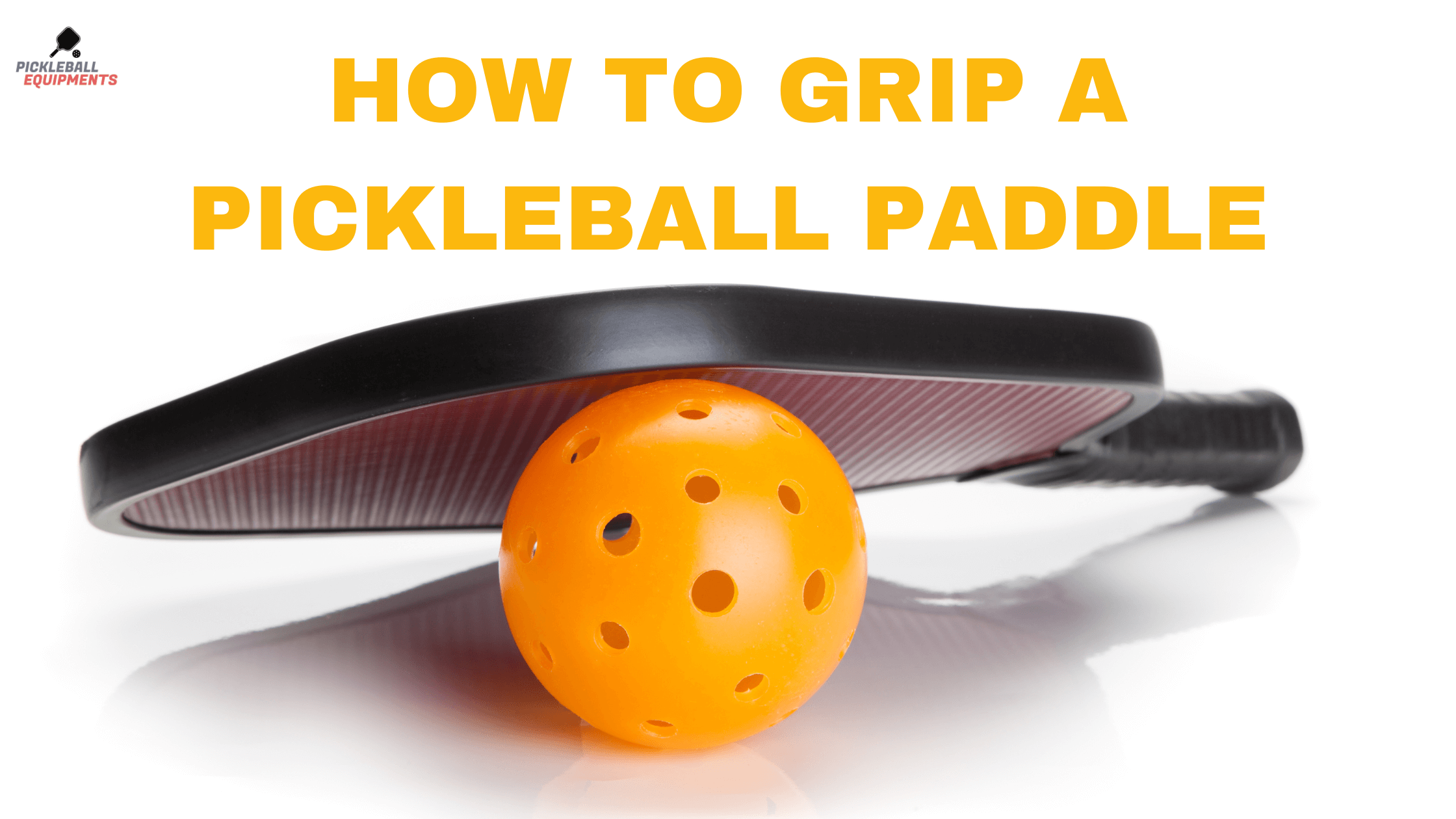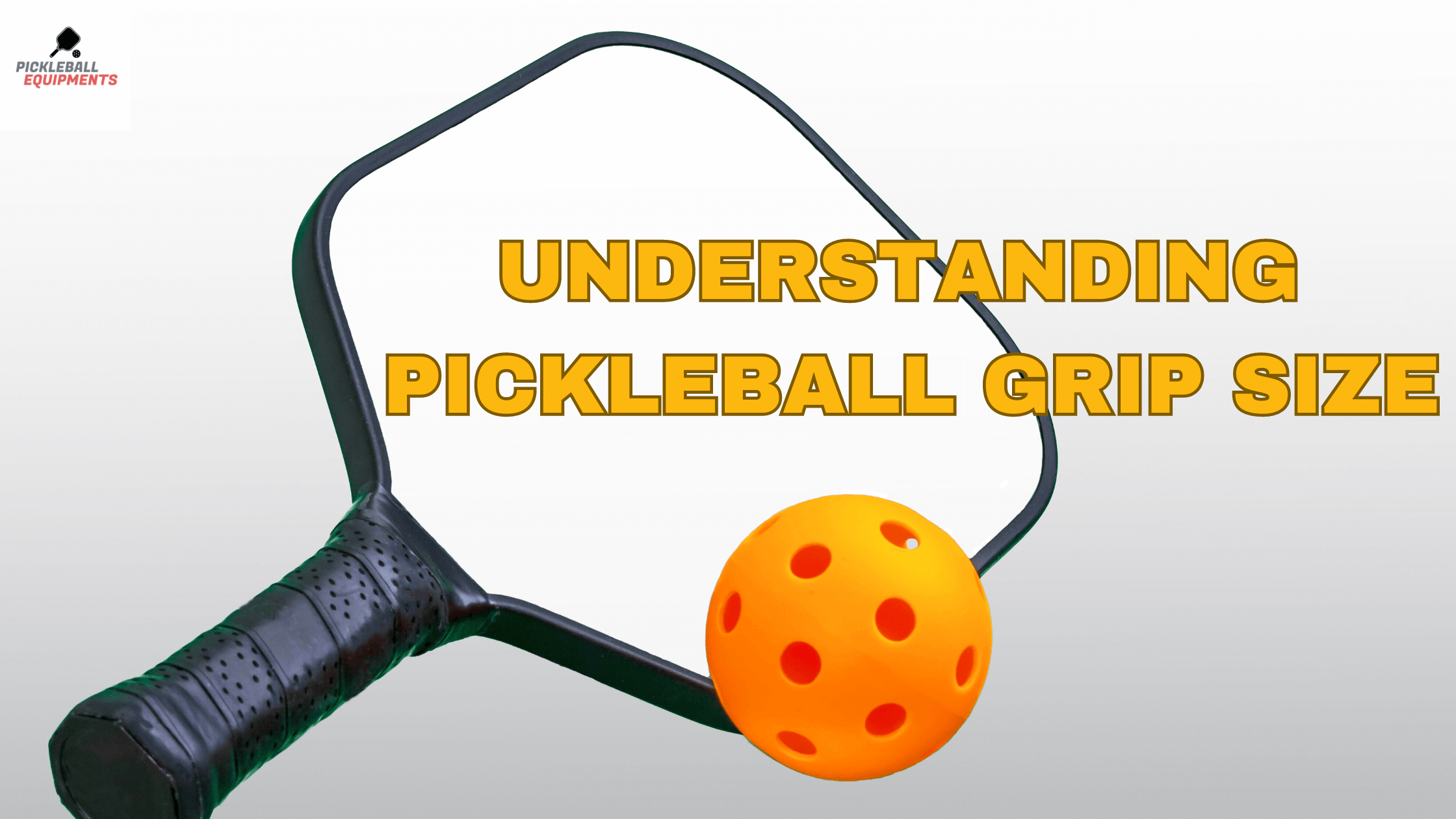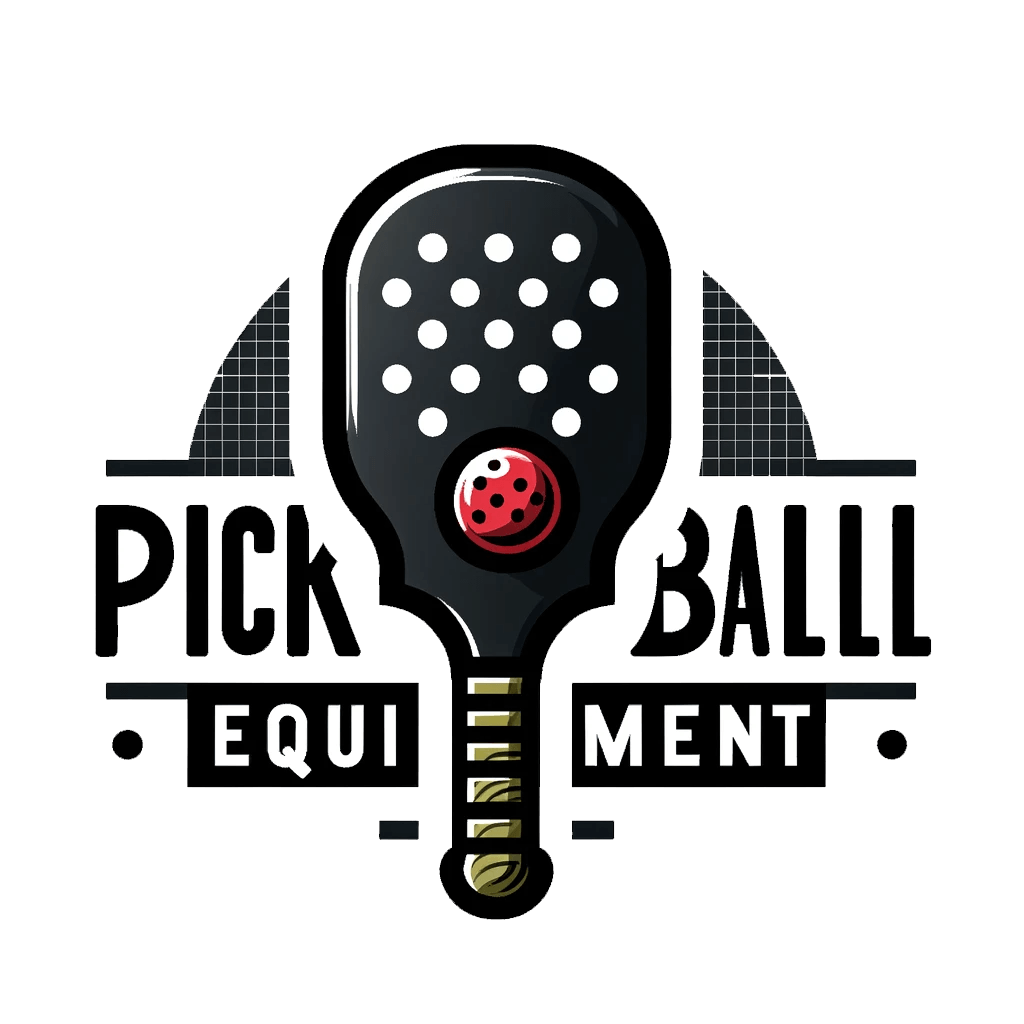Key Takeaways
- Grip mastery essential for power, control, and game precision.
- Different grips: Eastern, Western, Continental, and Penhold.
- Correct grip size critical for comfort and injury prevention.
- Grip transitions crucial for versatile shot execution.
- Common grip mistakes affect shot quality and consistency.
How to grip a pickleball paddle? Pickleball, a sport that has witnessed a surge in popularity over the years, owes a significant part of its appeal to the simplicity of its equipment and the intricacy of its techniques. The pickleball paddle, while seemingly straightforward, is a tool that requires mastery, especially in the way it’s held. A grip might seem like a minor aspect, but as we’ll uncover, it can be the difference between a novice player and a seasoned pro.
In the vibrant and fast-paced world of pickleball, where every shot counts, the way you grip your pickleball paddle is paramount. It’s not just about holding the paddle; it’s about wielding it with precision, control, and intent. The grip becomes the player’s direct connection to the game, influencing every shot, serve, and volley. And as with many things in life, the nuances often hold the key. Delving deep into the world of pickleball grips, we’ll explore how the right hold can elevate your game, ensuring you’re always performing at your pinnacle.
How to Grip a Pickleball Paddle

Introduction to Pickleball Grip:
In the grand tapestry of sports, few elements are as foundational as the way an athlete holds their equipment. Think of a baseball player’s grip on their bat, a golfer’s hold on their club, or a tennis player’s grasp on their racquet. Similarly, in pickleball, the grip forms the very core of the gameplay.
A firm, correct, and comfortable grip on your pickleball paddle lays the groundwork for a robust game. But why is it so essential? Firstly, the grip directly affects the force transmission. A good grip ensures that the energy from your arm flows seamlessly to the paddle and then to the ball, ensuring powerful shots.
But it’s not just about power. The grip also offers unparalleled control over the ball. Whether you’re aiming for a spin, a drop shot, or a hard serve, how you hold the paddle determines the ball’s trajectory, speed, and spin. It’s this control that allows players to strategize, outwit their opponents, and make split-second decisions that can change the game’s tide.
Moreover, precision is another feather in the cap of a good grip. The ability to place the ball exactly where you want it on the pickleball court, anticipate your opponent’s moves, and respond effectively hinges on the precision provided by the grip.
In essence, while the pickleball paddle is the instrument, the grip is the tune it plays. It’s the silent force that shapes the game, often overlooked but always indispensable. As we journey further into the world of pickleball, understanding, mastering, and evolving our grip will be the milestones that mark our progress and prowess.
Exploring Different Grips:
Eastern Grip (The “Shake Hands” Grip):
When diving into pickleball grips, the Eastern Grip is often the first port of call for many players, both novice and experienced. Its popularity stems from its intuitive feel and versatility. As the name suggests, adopting the Eastern Grip feels very much like extending your hand for a firm handshake. To master this grip:
Place your playing hand flat against the paddle face.
Slide your hand down the paddle until it naturally settles on the handle.
Ensure the base knuckle of your index finger is aligned with the first bevel of the paddle’s handle.
The beauty of the Eastern Grip lies in its adaptability. It’s a neutral grip that allows players to seamlessly transition between forehand and backhand shots without needing to adjust their hold. Additionally, this grip provides a balanced paddle face orientation, making it conducive for spins, dinks, and drives.
Western Pickleball Grip (The “Frying Pan” Grip):
Venturing a bit more into specialized territory, we encounter the Western Grip. Unlike the neutral stance of the Eastern Grip, the Western Grip leans more towards a semi-western or even full western hold, resembling the act of gripping a frying pan’s handle. To get a feel for this grip:
Hold the paddle perpendicularly to the ground.
Place your playing hand on the top of the paddle face.
As you grasp the handle, your palm should be positioned under the paddle, giving it a distinct orientation.
This grip shines when power and spin are the order of the day, especially for aggressive forehand shots. The angle of the paddle face in this grip naturally imparts topspin to the ball. However, it’s worth noting that while the grip optimizes forehand shots, it can be a tad challenging for backhands due to the paddle’s angle.
Continental Grip:
Often dubbed the “chameleon grip” for its adaptability, the Continental Grip finds its niche between the Eastern and Western Grips. It’s the grip of choice for players who want a bit of both worlds. Here’s how to get it right:
Place your hand flat on the top of the paddle face.
Drag your hand down, then grip the handle with the base knuckle of your index finger on the second bevel.
The Continental Grip offers a slightly open paddle face, which is ideal for serves, volleys, and overhead smashes. Its orientation also allows for a mix of flat shots and spins, granting players a diverse shot range.
Penhold Grip:
Drawing inspiration from table tennis, the Penhold Grip offers a refreshing twist to conventional pickleball grips. The grip’s essence is captured in its name, as it mirrors the act of holding a pen. To embrace this grip:
Hold the paddle handle between your thumb and index finger, much like clutching a pen for writing.
The remaining fingers curl around the handle’s back, providing stability and control.
While the Penhold Grip may not be as mainstream as its counterparts, it holds a special place for players aiming for agility and wrist flexibility. The grip allows for sharp angles and deceptive spins, making it a wildcard choice for those looking to catch their opponents off guard.
Understanding Pickleball Grip Size:

When it comes to pickleball, one size doesn’t fit all, especially concerning grip size. The right grip size is akin to wearing a perfectly fitted shoe; it enhances performance, provides comfort, and minimizes the risk of injuries. Picking the right pickleball grip size is fundamental to how you interact with the paddle.
- Measurement: To determine your grip size, you can use a ruler to measure the distance from the tip of your ring finger to the second crease in your palm. This measurement, in inches, typically corresponds to your ideal grip circumference.
- Factors to Consider: Apart from the measurement, consider factors like play style, sweat tendency, and personal comfort. Some players prefer a slightly larger grip for more cushioning or a smaller grip for better maneuverability.
- Consequences of Wrong Size: A grip that’s too large can cause reduced wrist snap in serves and overheads, while a grip that’s too small might lead to overuse injuries due to excessive wrist action. An ill-fitted grip size can also lead to arm strain, reducing shot effectiveness and accuracy.
Grip Transitions in Pickleball:
In the dynamic realm of pickleball, flexibility is key. While it’s crucial to master a particular grip, the ability to transition seamlessly between different grips sets apart the amateurs from the pros.
- Why Transition: Different shots often require different grip orientations. For instance, a serve might be better executed with a continental grip, while a forehand drive might benefit from an eastern grip.
- Techniques: The trick lies in subtle hand movements along the paddle handle. With practice, these transitions become second nature, allowing players to switch grips mid-rally without losing momentum.
- Strategic Advantage: Mastering grip transitions offers a strategic edge, enabling players to execute a wider variety of shots and respond better to opponents’ moves.
How Grip Affects the Pickleball Court:
Your grip is the primary mediator between your intentions and your actions on the pickleball court. It directly influences how you command the ball.
- Trajectory Control: The grip determines the paddle face’s orientation at ball impact, which in turn affects the ball’s flight path. A slight change in grip can mean the difference between a ball landing in or out.
- Spin Dynamics: The angle and speed at which the paddle strikes the ball, guided by the grip, can impart different spins, affecting the ball’s bounce and deceiving opponents.
Power Transmission: A solid grip ensures efficient force transfer from the arm to the paddle and then to the ball, guaranteeing powerful shots.
Common Grip Mistakes on the Paddle Face:
While understanding grips and their advantages is crucial, being aware of common pitfalls is equally important.
- Over-gripping: Holding the paddle too tightly can restrict wrist movement, leading to less fluid shots and increased arm strain. It can also reduce the feel of the ball, leading to decreased control.
- Incorrect Paddle Face Angle: Not aligning the paddle face correctly can result in unintended shot directions. For instance, an overly open face might send the ball sky-high, while a closed face might drive it into the net.
- Not Adjusting Grip Pressure: Different shots require varying grip pressures. A drop shot might need a looser grip for touch and finesse, while a drive might demand a firmer hold. Adapting grip pressure based on the shot can enhance shot quality and consistency.
[sc_fs_faq html=”true” headline=”h2″ img=”” question=”What’s the difference between the pickleball paddle grip and other racquet sports?” img_alt=”” css_class=””] Despite their similarities, pickleball grips are distinctive due to the sport’s equipment. The pickleball paddle’s stringless form and solid face require grips to traverse its unique ball dynamics and paddle bounce, distinguishing it from tennis and badminton. [/sc_fs_faq][sc_fs_faq html=”true” headline=”h2″ img=”” question=”How often should I reassess my grip size?” img_alt=”” css_class=””] Grip size should be checked every several months. Changes in playing style, hand size (particularly in younger players), or pickleball paddle grip wear can affect comfort and performance. Recognizing discomfort or decreased shot efficacy may indicate a reconsideration. [/sc_fs_faq][sc_fs_faq html=”true” headline=”h2″ img=”” question=”Is the continental grip suitable for beginners?” img_alt=”” css_class=””] Absolutely! Pickleball beginners should start with the continental grip. It’s versatile enough for serves and volleys. The continental grip is ideal for beginners who want a comfortable, versatile grip that will help them learn pickleball. [/sc_fs_faq]
Wrapping up:
while pickleball is a symphony of various elements coming together, the grip holds a special place as the conductor. It orchestrates the flow of the game, guiding the player’s moves, and shaping their destiny on the court. Whether a novice taking their first steps or a seasoned pro aiming for perfection, understanding and mastering the art of the grip is the key to making every game not just a match but a performance.
